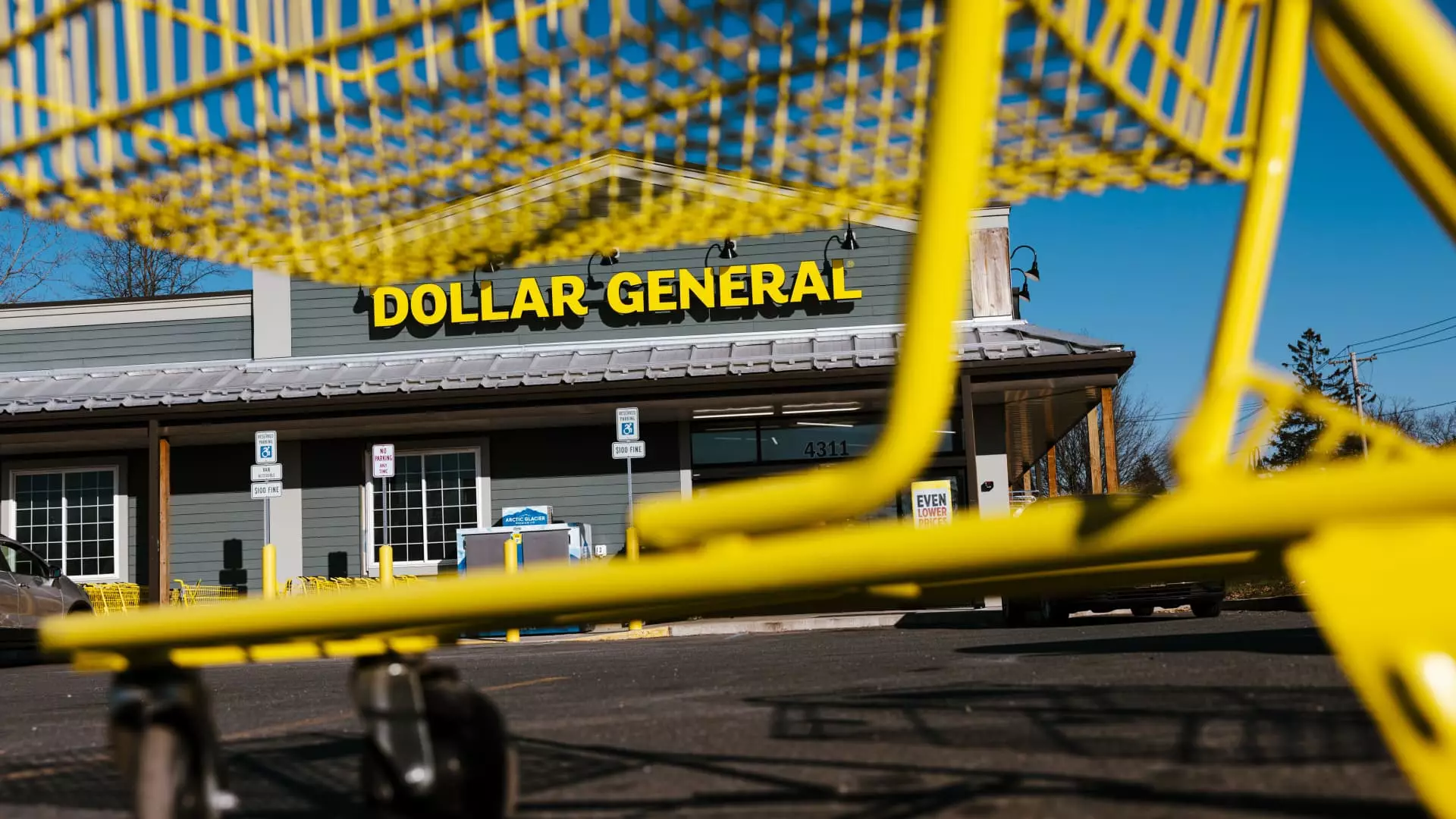Dollar General recently released its fiscal fourth-quarter results, and while the revenue figures appear promising at first glance, a deeper analysis reveals unsettling truths lurking beneath the surface. The company reported revenues of $10.3 billion, slightly surpassing Wall Street’s expectations of $10.26 billion. However, this so-called growth must be scrutinized closely. The company’s net income plummeted dramatically to $191 million, down from $402 million a year prior, with earnings per share falling sharply from $1.83 to just 87 cents. While revenue might show a 4.5% year-over-year increase, this headline figure can be misleading. The company is effectively masking its profitability struggles with increased sales that are not translating into real financial health.
The Cost of Store Closures
A critical element of Dollar General’s recent announcement is its decision to close a total of 141 stores, including 96 Dollar General locations and 45 Popshelf outlets. This aggressive move underscores a serious reevaluation of its portfolio. While the company claims that this represents less than 1% of its store base, the financial ramifications are sobering. The charges associated with these closures amounted to a staggering $232 million, a clear indication that the retail giant is wrestling with its growth strategy. The stark reality is that closing stores typically signals a company in distress; it reflects a brand that cannot sustain profit margins and is grasping at straws to stabilize its financial position.
Popshelf: A Misguided Experiment
The Popshelf concept aimed to attract higher-income shoppers looking for affordable luxury goods, but it now appears to be little more than a distraction pulling resources away from core operations. The decision to convert several Popshelf locations into flagship stores may demonstrate an attempt to salvage a finicky retail strategy. CEO Todd Vasos’s statement regarding the economic environment—indicating that consumers are left with “only enough money for basic essentials”—presents a chilling perspective. This admission leads us to question: has the company misjudged its audience, or is Popshelf a miscalculation driven by inflated expectations of consumer behavior in a challenging economic climate?
The Competitive Trap
As dollar stores like Dollar General vie for relevance, the perspective shifts—especially under the weight of rising inflation and heightening competition. Consumers are increasingly gravitating towards competing retailers, particularly those with expansive e-commerce capabilities such as Walmart. Dollar General’s latest strategy to introduce around 100 new private-label products signifies an attempt to broaden its appeal, but it raises a pertinent question: Is expanding the product line a robust solution or a mere bandage on a deeper wound? This strategy may not resonate if a value-conscious consumer base continues to prioritize essential products over an array of novelty items.
Macro Trends and Future Predictions
Looking ahead, Dollar General has projected modest revenue growth of 3.4% to 4.4% for fiscal 2025, a figure that falls slightly short of Wall Street’s expectations. This conservative forecast surfaces revealing insights into the macroeconomic trends affecting lower-income consumers, who are becoming an increasingly precarious demographic. With inflation continuing to squeeze discretionary spending, it is doubtful whether the anticipated growth will materialize. Is Dollar General prepared to cater to a market that is bound to experience further economic challenges?
Ultimately, while Dollar General’s financial results might superficially convey a narrative of resilience, they highlight a company grappling with fundamental issues. In the quest for growth against a pulsating backdrop of competition and fluctuating consumer purchasing power, the once-dominant dollar store chain seems to be teetering on the edge of a precarious cliff. The question remains: can Dollar General reclaim its footing, or is it destined to become a cautionary tale in the annals of retail history?

